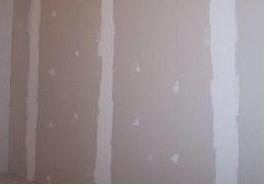If you plan on remodeling you’ll eventually come across drywall, one of the most popular and widely used materials in residential building today. Drywall is installed on interior walls as a final surface layer. It is primed and painted and sometimes covered in a plaster texture to add detail.
In case you’re wondering what drywall is made of, you’re about to find out.
Drywall is different from the plaster of paris used to cover walls decades ago. The typical drywall board is made from a sandwich of pulpy, cardboard-like paper (or fiberglass, in mold resistant drywall) and gypsum, a naturally occurring mineral found in sediment deposits. Gypsum is soft and white or grayish in color, and it is used to make plaster of paris, the same material used to plaster walls, and make castings.

Other ingredients may find their way into a drywall sheet to reduce costs or improve certain attributes of the drywall like water resistance. For instance, talc, limestone and perlite (among other ingredients) may be in your drywall.
Drywall is a solid, heavy board ideal for interior walls, but susceptible to water damage, mold and the occasional dent or crack. Drywall with a paper exterior is especially susceptible to mold because paper is organic. Fiberglass covered drywall is a little more mold-resistant.
The name drywall differentiates it from plaster, which is spread on the wall wet. The drywall is mounted dry to the studs using screws or nails.
Other names identify drywall including gypsum board, and sheetrock® a proprietary name.
